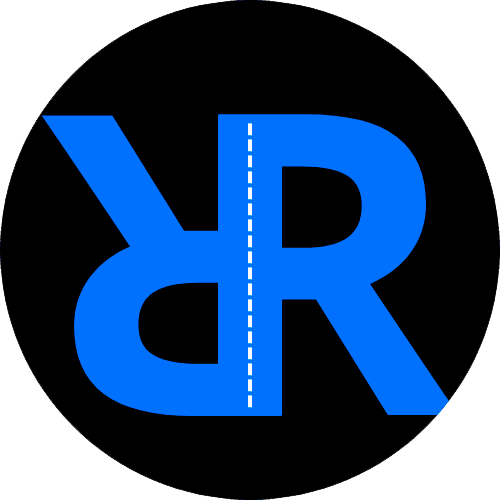SAP Transaction RSORMDR: A Step-by-Step Guide for SAP Users
Welcome to our tutorial on SAP transaction RSORMDR, a powerful transaction code used in SAP for managing and analyzing reporting structures. Whether you are a young SAP consultant or an inexperienced SAP user searching for guidance on how to use RSORMDR, this tutorial will provide you with detailed instructions and concrete examples to help you navigate through this transaction with ease.
Before we proceed with the tutorial, we would like to introduce you to an excellent resource that can enhance your SAP skills and boost your career. Check out our SAP MM online video training, offered by an expert SAP MM consultant. This comprehensive training program, available at roadtoexpert.com, will equip you with in-depth knowledge and practical insights to become an expert in the SAP MM module.
Now, let’s dive into our tutorial on using SAP transaction RSORMDR.
What is SAP Transaction RSORMDR?
SAP Transaction RSORMDR is a transaction code used in SAP for managing and analyzing reporting structures. It provides a user-friendly interface to create, update, and display reporting structures such as organizational units, positions, and employees. With RSORMDR, you can efficiently maintain and analyze reporting relationships within your organization.
Step 1: Accessing SAP Transaction RSORMDR
To access RSORMDR, follow these steps:
- Log in to your SAP system using your user ID and password.
- Launch the SAP Easy Access Menu.
- Navigate to the “Human Resources” folder and expand it.
- Locate and click on the “Organization Management” folder.
- Select “Reporting Structures” from the sub-menu.
- Choose “Reporting Structure Browser” to access the RSORMDR transaction.
Step 2: Understanding RSORMDR Transaction Screen
Once you have accessed RSORMDR, you will see the transaction screen, which consists of various tabs and fields. Let’s explore each of them:
- General Data: This tab contains the main fields for entering general information about the reporting structure, such as the structure ID, description, and validity dates.
- Organizational Units: Here, you can define and manage the organizational units within the reporting structure. You can create new units, assign employees, and maintain relationships between units.
- Positions: This tab allows you to create and manage positions within the reporting structure. You can assign employees to positions, define job requirements, and track vacant positions.
- Employees: In this tab, you can maintain employee data within the reporting structure. You can assign employees to positions, manage employee attributes, and track organizational assignments.
- Reporting Relationships: Here, you can define and maintain reporting relationships between organizational units, positions, and employees. You can specify supervisors, subordinates, and other reporting relationships.
- Validity Periods: The validity periods tab enables you to define the validity dates for the reporting structure. You can specify the start and end dates to control when the structure is active.
Step 3: Creating and Maintaining Reporting Structures
To create and maintain reporting structures using RSORMDR, follow these steps:
- Start by filling in the necessary fields in the “General Data” tab:
- Structure ID: Enter a unique identifier for the reporting structure.
- Description: Provide a brief description of the structure.
- Validity Dates: Specify the start and end dates for the structure’s validity period.
- Move to the relevant tabs (Organizational Units, Positions, Employees, Reporting Relationships) to create and maintain the corresponding data according to your organization’s requirements. Fill in the necessary fields and save the changes.
- Once you have created and maintained the reporting structure, you can use the various tabs to display and analyze the structure’s data. You can view the organizational units, positions, employees, and reporting relationships, as well as generate reports and export the data if needed.
Congratulations! You have successfully created and maintained a reporting structure using SAP transaction RSORMDR.
Step 4: Additional Functionality and Tips
RSORMDR offers several additional functionalities and tips to enhance your experience and optimize reporting structure management:
- Mass Changes: You can perform mass changes to multiple organizational units, positions, or employees by selecting the relevant entries and using the mass change function. This saves time and effort when updating multiple records simultaneously.
- Integration with Other SAP Modules: RSORMDR integrates with other SAP modules, such as Personnel Administration (PA), to ensure consistency and accuracy of employee data across different modules.
- Authorization Control: SAP provides authorization control to restrict access to RSORMDR and ensure that only authorized users can create, modify, or display reporting structures.
- Data Validation: RSORMDR performs data validation checks to ensure that the entered data meets the defined criteria and follows the organizational structure guidelines.
Conclusion
In this tutorial, we have provided you with a step-by-step guide on using SAP transaction RSORMDR to manage and analyze reporting structures. We explained the basics of RSORMDR, described the transaction screen, and outlined the steps to create and maintain reporting structures. Remember to continuously learn and practice to become proficient in SAP.
If you want to further enhance your SAP skills and become an expert in the SAP MM module, we highly recommend our SAP MM online video training. This training program, designed by an expert SAP MM consultant, offers comprehensive modules and practical exercises to help you master SAP MM. Visit roadtoexpert.com to learn more and take your SAP MM skills to the next level.
